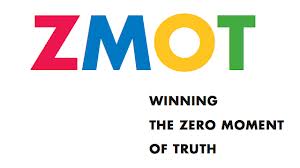As mobile devices continue their gains in popularity and usage worldwide, more consumers are interacting with brands at various stages of the buying life cycle—from browsing, researching and comparing products to reading reviews, sharing their experiences and making actual purchases. The digital affinity of consumers, who once were bound by a very tactile customer experience of seeing and touching products in-store, has put a lot of pressure on CMOs to become the boss of their online customer experience.
While being a CMO connotes leadership and authority, it doesn’t inherently mean brands need to be forceful or intimidating in how they speak with their online customers. What does work is a smarter and more nuanced approach to listening to their customers’ explicit actions and using those actions to become more relevant to each individual customer. Brands that get this approach see it pay off with greater respect, trust, loyalty and, of course, revenue.
So to help CMOs master their online customer experience, I have outlined five surefire rules they should follow to get customers to respect, trust and spend more dollars more often with them across multiple channels.
Rule #1: Don’t shout and bulldoze your customers into clicking and buying.
In the traditional model of sales, salespeople often acted and operated under the premise that being louder, pushier and more forceful was the way to win over, or bulldoze, consumers to get them to say “yes.” There was a notion that salespeople could wear down consumers into succumbing to their will and, as a result, get them to make a purchase.
While that approach may have resulted in a one-time sell, we would all agree that it isn’t the most effective way to generate repeat, long-term loyalty and purchases from customers. Today’s customers have almost limitless choices and options at their disposal. If they can’t find a product in-store, they can easily and quickly type, click, tap and purchase away on a number of competing online sites. If they’re strapped for time, they don’t have to wait (for hours) to get in front of their desktop/laptop computer at home. Instead, they can browse, compare and shop from thousands of product options on a brand’s mobile-optimized site directly from their iPhone, Samsung Galaxy, Apple iPad or Google Nexus tablet.
Even more than convenience, consumers aren’t as easily swayed by hyperbole, outlandish claims or dubious offers. Brute force and fear are no longer profitable strategies. It’s the brands that are authentic, humble and real that get consumers to keep their eyes (and hands) on their online and mobile sites longer and ultimately clicking through multiple areas of the site to the checkout or to request a quote.
Perhaps more important, it is almost impossible to guess at what ideas and appeals will resonate most with your buyers and entice them to buy. Lower costs? Free shipping? Sustainable materials? Thirty-day guarantees? Bigger images? Different CTA? Guess if you want. But the only way to truly know for sure what attracts your customers is to test and learn what they really want. More important, it is to use the big data from your tests to tailor what you’re saying, doing and offering across all devices. The most successful online marketers aren’t browbeating; they’re influencing by showing value. They are experimenting and exploring all the time.
Rule #2: Listen to your customers and make their lives simpler and more productive.
The reality is that customers will be more accepting and responsive to messages and offers that have real value. If there is no perceived value, they’ll click away without batting an eye. At the end of the day, consumers want the same thing from the online customer experience as they do from the products they’re buying. Simply put, it needs to solve a problem. If your customer experience isn’t solving a problem for your customers, you’ve got a big problem on your hands, and all the fancy design work you can imagine (and spend money on) won’t make any difference.
The key to rule #2 is not to guess at what problem drove the customers to your site. Instead, it is to serve up only what your customers truly want based on what you know about them as well as what they have previously asked or searched for. Recommend products that make sense for them, not for you as a brand. By listening to your customers’ needs and digital footprints, you can tell a lot about them and what types of messaging and offers are likely to resonate with them and make them more willing to spend money repeatedly across all devices with your brand.
Rule #3: Be in more than one place at a time.
Consumers don’t just look for and buy products in one place. They’re using multiple devices simultaneously throughout their day and juggling dozens of activities at once. In this “Age of the Customer,” the adage of “I can’t be in two places at one time” no longer rings true. For brands that want to get customers to experience and interact with them and their products/services consistently and repeatedly, it’s important to be in more than one place at a time and deliver a consistently great experience in all of these channels.
Rule #4: Never pistol-whip new visitors.
For your website’s home page, the easy way out is to display three, four or even five offers, rotating in sequence. On the surface, it makes sense: The more “stuff” you show, the better your chances are of finding something that a given customer may like. Better yet, it also satisfies all those internal groups that are clamoring for exposure on the website.
However, this approach is problematic because the data shows that few visitors (other than your internal teams) ever get to the end of your rotating banners on your home page. This is because there is an average of a 50 percent drop-off after each banner. Experience also shows consumers do not have the time or the patience to wait for the right offer to appear. It’s much more effective to test home page offers (to quiet those internal groups) and use that data to personalize the offer based on who is visiting your website.

Rule #5: Cement boots do not create loyalty.
In all cases, you will make more money across multiple channels from customers who return again and again. The long-term revenue opportunity lies in building trust and loyalty with visitors who keep coming back and recommend your site to their network of friends and family.
What is the best way to get customers to sign up for newsletters or emails? What should you say in your follow-up communication to customers? Should you offer exclusive products or discounts? How should you greet repeat visitors and what should you offer them? Have you tested and experimented with this content? These are all great questions brands should be asking themselves when optimizing their online presence.
There’s a reason why Amazon garners such incredible repeat business. The online giant understands which groups of consumers they are actively selling their products to and integrates those consumers’ digital history, preferences, behaviors and actions into their customer experience across all devices. If brands want to learn anything from Amazon, it should be that engagement across multiple channels is less about muscle and more about smarter marketing.











